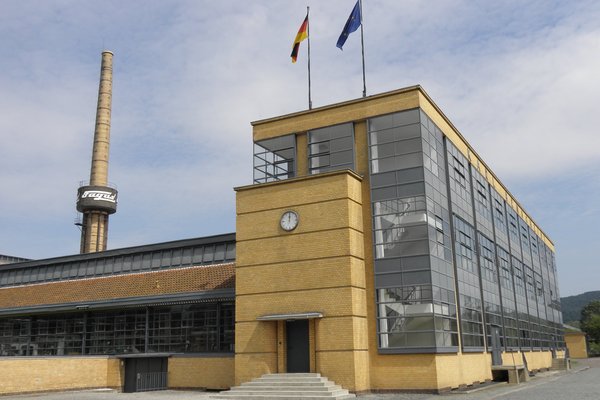Germany
Fagus Factory
The Fagus Factory in Alfeld, an operational factory producing shoe lasts, is an important example of early modern architecture.
The group of buildings was built in 1911 by the architect Walter Gropius. Light was required for work purposes: this led to an almost entirely glazed building, via the innovative use of "curtain walls" (vast glass panels). The functionalist approach was a major break with the existing architectural and decorative values of the time and it is considered the starting point of the Bauhaus movement.
Community Perspective: Access to the main factory buildings is possible only on weekends by guided tour (though Ian got some VIP access!) – on other days, you have to make do with the interesting exhibition in the former storehouse and the outside views of the glass panels.
Site Info
Official Information
- Full Name
- Fagus Factory in Alfeld (ID: 1368)
- Country
- Germany
- Status
-
Inscribed 2011
Site history
History of Fagus Factory
- 2011: Inscribed
- Inscribed
- Type
- Cultural
- Criteria
- ii
- iv
Links
- UNESCO
- whc.unesco.org
- Official
-
- fagus-werk.com — Official Fagus Werk site
- Related
-
- en.wikiarquitectura.com — Wiki Arquitectura on the Fagus Factory
- en.wikipedia.org — Wikipedia's Fagus Factory
- greatbuildings.com — Fagus Works on GreatBuildings.com
All Links
UNESCO.org
- whc.unesco.org — whc.unesco.org/
Official Website
- fagus-werk.com — Official Fagus Werk site
Related Resources
- en.wikiarquitectura.com — Wiki Arquitectura on the Fagus Factory
- en.wikipedia.org — Wikipedia's Fagus Factory
- greatbuildings.com — Fagus Works on GreatBuildings.com
Community Information
- Community Category
- Secular structure: Factories and industry
Travel Information
Harz Hotspot
Recent Connections
-
Perfect Inscriptions
2011 -
European Route of Industrial Heritage
Fagus Factory World Heritage SiteSee w…
-
Curtain wall
"It exemplifies the innovation of the c…
Connections of Fagus Factory
- Trivia
-
-
In private ownership
Fagus-Grecon Greten GmbH & Co.KG
-
- History
-
-
Inscribed in connection with an anniversary
100 year anniversary of construction
-
- Architecture
-
-
Brick architecture
-
Early Modernism
"Designed in around 1910, the Fagus factory in Alfeld constitutes an architectural complex which foreshadows the modernist movement in architecture." (Official description) -
Designed by Walter Gropius
The factory was designed by Walter Gropius and Adolf Meyer. -
Curtain wall
"It exemplifies the innovation of the curtain wall, which optimises both luminosity and lightness." (OUV)
-
- World Heritage Process
-
-
Perfect Inscriptions
2011
-
- Human Activity
-
-
Forced labour during WWII
Fagus was one of the German shoe companies that used Concentration camp inmates were as guinea pigs for testing products.
-
- Constructions
-
-
Railways
'The chip and coal bunker is at the northern boundary of the factory site, near the railway line and the engine room. Set up in 1911, it was extended in 1923-24 by Gropius. The rail-lifting jack / rail-car scales is a small building next to the railway sidings, which houses scales for weighing railway cargos. Built by Gropius in 1921, it reproduces the main stylistic themes of the main building.' - AB Evaluation
-
- WHS on Other Lists
-
-
European Route of Industrial Heritage
Fagus Factory World Heritage SiteSee www.erih.net
-
- Timeline
- WHS Hotspots
-
-
Harz Hotspot
1h+ by train -
Hamburg Hotspot
-
News
No news.
Recent Visitors
Visitors of Fagus Factory
- Adrian Turtschi
- Alexander Barabanov
- Alexander Lehmann
- A. Mehmet Haksever
- Ammon Watkins
- Ana Lozano
- Argo
- AS
- Aspasia
- Assif
- Astraftis
- a.thum
- Atila Ege
- awestix
- Bamse
- BaziFettehenne
- Bill Maurmann
- Bin
- Birgitte Sørensen
- Bram de Bruin
- Brendan Carroll
- Carlos Sotelo
- Caspar
- Cezar Grozavu
- Christer Sundberg
- Christian Wagner
- Christoph
- Christravelblog
- Claire Bradshaw
- Clyde
- Colossus
- Corinne Vail
- Csaba Nováczky
- ctravel
- CugelVance
- Damientournay
- Daniela Hohmann
- Daniel Chazad
- Dan Pettigrew
- David Berlanda
- Dimitar Krastev
- Dirk-pieter
- Dolemite92
- Dorejd
- Dr. Caligari
- Dwight Zehuan Xiao
- Echwel
- Els Slots
- Emilia
- erdsaumnaht
- Errol Neo
- Eva Kisgyorgy
- Evgenii
- fabi-ddorf
- Fan Yibo
- Farinelli
- Federico P.
- Feldhase
- Femke Roos
- FK
- Frederik Dawson
- FS
- Gary Arndt
- George Gdanski
- GeorgeIng61
- Hadrianus
- Harald T.
- Harry Mitsidis
- henrik_hannfors
- heywhatever2
- Hubert
- Iain Jackson
- Ian Cade
- Ingemar Eriksson
- Ingrid
- Ivan Rucek
- Jakob F.
- Janina Lehmann
- Janos
- Jan-Willem
- Jan Zimmermann
- Jarek Pokrzywnicki
- Jens
- Jezza
- Joel on the Road
- Jonas Hagung
- Jonas Kremer
- Joyce van Soest
- Jurre
- Karito Vies
- Kasper
- Kbecq
- Knut
- Kristin
- krtek
- Kurt Lauer
- Lara Adler
- lichia
- Lisu Marian
- Little Lauren Travels
- Luboang
- Lucio
- Ludvan
- Luis Filipe Gaspar
- Maciej Gil
- Maciej Gowin
- Mahuhe
- Manuelfunk
- Martin
- Martina Rúčková
- Marty
- MaxHeAnouBen
- MaYumin
- MH
- Michael Novins
- Michael Turtle
- Mikko
- Moe
- Mo-han Je
- nan
- Nick M
- Nicole Lampos
- Nihal Ege
- PabloNorte
- Patrik
- Paul Schofield
- PeterH
- Peter Lööv
- Petteri
- Philipp Leu
- Philipp Peterer
- Piotr Wasil
- Rafał Kałczuga
- Ralf Regele
- Randi Thomsen
- Reza
- Rodinia
- rogerding
- Roger Ourset
- Roman Bruehwiler
- Rudegirl
- Sabrina Liebehentschel
- Sandmann15
- Schnitzel
- Sebasfhb
- Sehnsuchtsbummler
- serghei.belous
- Sergio Arjona
- Shandos Cleaver
- Simonh
- Slavi
- Solivagant
- Stanislaw Warwas
- Stijn
- Sturuss
- Svein Elias
- Szucs Tamas
- Tamara Ratz
- Taotao Chen
- Tarquinio_Superbo
- Thomas Buechler
- Thomas van der Walt
- Timonator
- Tom Flaten
- tony0001
- triath
- Tsunami
- Vanessa Buechler
- VLabhard
- WalGra
- Walter
- Wojciech Fedoruk
- Wo_ko
- Xiquinho Silva
- YaroMir
- Yevhen Ivanovych
- Zhenjun Liu
- Zoë Sheng
- Zos M
Community Reviews
Show full reviews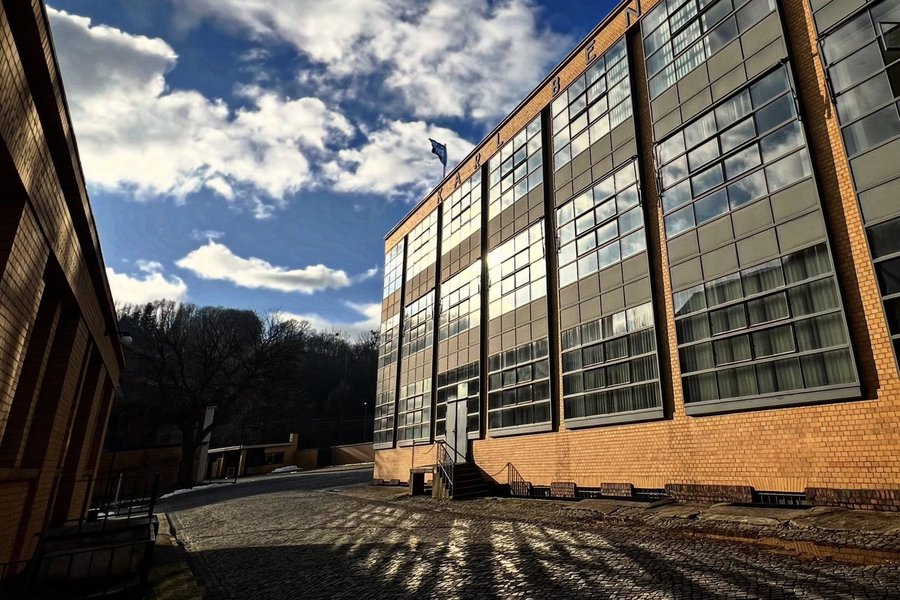
On a windy winter day, I visited the Fagus Factory, a pioneering work of modern architecture and today a UNESCO World Heritage Site. Given the season, I expected the site to be quiet, but to my surprise the guided tour drew more than 25 participants, many of them architects or students of architecture. The visit began with a short documentary about the company’s history and its role in the shoe last industry. While the film was somewhat dry, watching it in a warm interior was a welcome start before braving the cold.
The Fagus Factory is not a single building but a complex of structures serving different functions, such as manufacturing, storage, and offices. Gropius was concerned with creating an overall design language that could unify these varied buildings. One of the key unifying elements is the use of brick, particularly a 40-centimeter-high, dark brick base that projects slightly from the façade. This feature appears repeatedly across the site, tying together the complex with a consistent rhythm. The most architecturally significant part of the ensemble is the office building, which broke with industrial conventions of the time. Instead of traditional load-bearing exterior walls, Gropius placed reinforced concrete columns inside, freeing the façade for innovation. The result was a building where glass dominates over brick, with iron frames suspending large glass panels and concealing the floor slabs with thin metal sheets. Most striking of all are the fully glazed exterior corners, which eliminated visible structural elements …
Keep reading 0 comments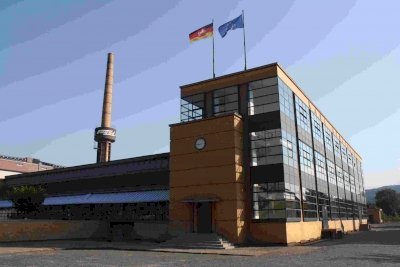
July 2018 - Roadtrip to France. After visiting Hildesheim we drove further to Alsfeld. around 9h we arrived the beautiful piece of architecture. A masterpiece and predecessor of Constructivist architecture.
We didnt want another 2 hours for the the first tour that day, anyway we were not that interested in the manufacturing of shoe lasts. We took a slow walk around the building, scrutinizing the details of the factory. The windows, the chimney, the combination of bricks and glass, all that is suiting perfectly. The place is very inviting, and you can easily take a walk also outside the opening times. Thanks to WHS we got to see this spot.
Keep reading 0 comments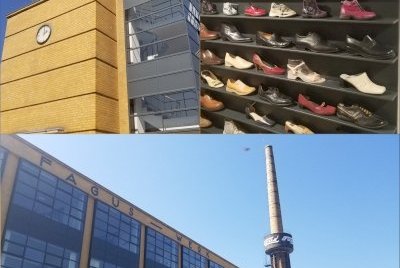
Faguswerk is not that fantastic by itself. It's a great visit, an interesting tour, you can spend several hours up to the whole day just on this WHS, but in the end the main focus for the inscription is that it is the origin of the architecture “Bauhaus” movement (another WHS of course, as well impact on Tel-Aviv building designs after the German Jews took the Bauhaus style to Israel - which some purist may tell me is not the correct way to explain it but that's the jist I got from the tour guide). Being the original is very, very huge but then it's a bit like someone telling me an old movie is great “because it was the first to use sound” but that's about it (bet you couldn't tell me which movie was first to use sound or color or 3D anyway).
There are several highlights: the entrance at the clock with its freestanding staircase, the railing near the cafeteria, the chimney, and of course the windows of the main building. Very worthy of inscription and a huge impact onto the world of architecture.
Keep in mind that to see the inside of the factory you must join a tour that runs on weekends (the factory is still in use so it's offlimits otherwise), but the website has a clear indication of special holiday times. Then again, if you can't go on a tour you can take a video guided tour on your own in …
Keep reading 0 comments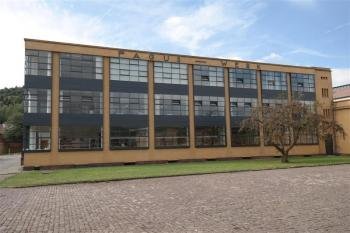
We arrived at the Fagus factory on a Saturday with the intention to participate in one of the guided tours which take place on Saturdays and Sundays. However, because there was an event scheduled on Sunday there was no tour on Saturday (since they were already setting up things for the event the next day).
Therefore, we had to take a tour with an audio/video guide. But we were lucky: the workers preparing the event didn't mind that we walked around in the factory so we got to see the same as during a guided tour (and maybe even more?).
Next to the audio guide tour, we also bought the 3-in-1 ticket (UNESCO visitor centre, Fagus-Gropius-exhibition and Gallery). The visitor centre does not add much to the info you get from the audio guide, but you can play with a media wall with information about all WHS (surprisingly addictive!).
The Fagus-Gropius-exhibition in the former warehouse provides five floors of background info about Fagus, shoes in general and even wood in general. While very well done and certainly interesting, we got the impression that there is too much space to fill - the upper floors become very high level. The Gallery is located in the former warehouse basements and is an art exhibition (can be skipped in our opinion).
Since we took the 'full package' (audio tour plus 3-in-1 ticket), we have spent about 2.5 hours at the Fagus factory, ending our visit in the Fagus-Gropius Café in the factory's former …
Keep reading 0 comments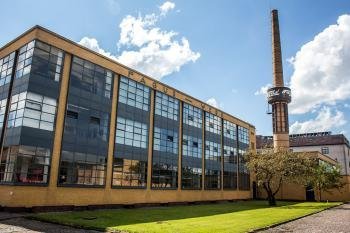
To appreciate the significant architectural details, it’s important to see the building from the outside and the inside. Even though the factory is operational, there are tours through all areas including past the production lines. There is also an excellent museum over several floors of the old warehouse that tells the story of the building and the business.
The tour that I take is led by one of the workers here – like most of them are. This means that not only do you get a great explanation of the building and its features, there’s also the opportunity to get a fascinating insight into the life of the workers and how it has changed over the past century.
The Fagus Factory is just a short ten minute walk from Alfeld train station and, in fact, arriving by train from the north gives an appropriate preview to the site. The factory is built along the railway line for the easy transportation of goods and the architects placed more emphasis on the trackside part of the building because they considered it would be seen by more people.
Keep reading 0 comments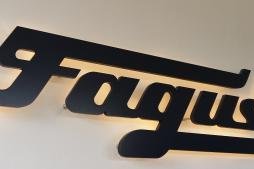
First things first, you can visit the factory from the inside. They offer guided tours run by retired employees each weekend and the tours come highly recommended (Sat 12:00h, Sun 10:30h). The level of access you get to a still fully operated plant is surprising. Unfortunately, the tours seem to be in German only.
For Gropius the Fagus Factory was his big breakthrough. He was 27 and did not have a big name yet. Through familiar connections he heard of the plant being built in Alfeld and wrote Carl Benscheidt, the founder of Fagus. Supposedly, Gropius' must have been pretty convinced of himself (loads of swagger in the letter). Lucky for him, Carl Benscheidt appreciated this mindset, recognized his talents and gave him the job. Gropius took over from Eduard Werner who had done the original plans for the plant. The result is a magnificent Bauhaus building, eight years before there was actually a Bauhaus (1911 vs 1919).
Apart from the architectural perspective, it is worthwhile to look at Fagus as an industrial heritage site. It's not a mine, not a coal or iron plant, but a shoe last plant, pretty unique in and of itself. Originally shoe lasts were made from beech, latin fagus, which is also where the company got its name. I had little knowledge on how shoes were produced so going to a shoe last plant was quite informative.
The founder of Fagus, Carl Benscheidt, got his big break in the 19th century …
Keep reading 0 comments
I visited this WHS in November 2014. I confess I'm not a fan of industrial heritage sites in general and so I wasn't too keen to visit this WHS. Yet I was pleasantly surprised with the way the visit is structured and even though you're not allowed inside the shoe last plant itself, the curtain wall windows easily allow any visitor to see the employees at work producing shoe lasts. In fact I'd recommend visiting on weekdays if possible to avoid seeing an empty factory. I also bought the new Fagus Factory 60c stamp and an interesting addition to my WHS library "Deutschlands Welterbe: Eine Reise zu allen UNESCO-Stätten" from the gift shop. All in all I think the Fagus Factory is a worthwhile stop on your way to Hildesheim or Corvey Abbey.
Keep reading 0 comments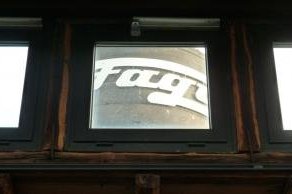
Two years after my first attempt I finally managed to get the right train and finally pay this site a proper visit, and I must admit I loved it. In fairness it was always going to appeal to me as it is an iconic piece of modern architecture.
The most important part architecturally is the glass curtain walls which were the first of their. Unfortunately these can mostly only be seen from the outside as the museum is in the earliest part of the factory. Whilst this was a little disappointing, the display in the museum was certainly very dedicated in putting forward the various aspects of its history. Whole floors were dedicated to its history, workers, architecture, materials, fashion and even on World Heritage sites; I was suitably impressed. The highlight for me was the top floor, having reclined back into the elegant wooden loungers I suddenly sat bolt upright as it abruptly dawned on me that they were angled to give a perfect view of the iconic ‘Fagus’ advertising wrapped around the chimney stack, wonderful.
As with several other visits to the less well known WHS in Germany, the staff were exceedingly friendly and helpful. The grounds keeper drove me around the site and made me feel welcome, even if my German meant I didn’t necessarily understand everything he was saying. After I had visited the museum I helped him get in contact with a relative in London, and in return I got to see some of the …
Keep reading 0 comments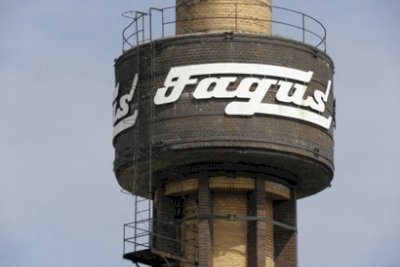
Two weeks after its WH designation, this still proved to be a pretty low-key site to visit. Alfeld an der Leine is a town somewhat hidden in the land close to the former GDR border, some 50km from the main North-South Autobahn. The Fagus Works is signposted from the town entrance, and indeed at first sight just looks like a factory. A very clean one that is – they develop wooden shoe lasts here.
I visited on a Saturday when no production was going on. By car, you enter the complex via the main factory gate. The gatehouse was also designed by Gropius in the overall style of the complex. I told the guard that I wanted to visit the exhibition, and he sent me on to a grey building at the back of the complex. This was a former storehouse, which was turned into an exhibition building.
There were about 15 other visitors around. One of the caretakers noticed the Dutch license plates on my car and called out - “all the way from Holland!” A foreign visitor clearly still is a rarity here. After paying the small entrance fee (3 EUR) I made my way through the four levels of exhibitions. The lower levels are mostly dedicated to the building’s history and architecture, while the upper levels focus on shoemaking. I really liked the historical photos of the factory – while it still was under construction and the photos by Albert Renger-Patzsch that made this work …
Keep reading 0 comments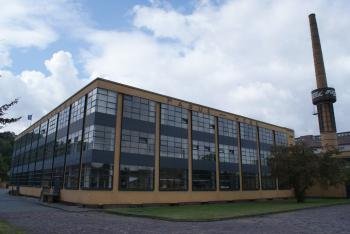
My visit of the Fagus factory in Alfeld was the last step of a 3-week-tour through Germany in summer 2009. I ticked off 11 WHS (e.g. Weimar, Dessau, Berlin, Quedlinburg, Dessau), now Fagus is the twelfth and clearly one of my favourites. The factory was constructed in 1911 by Walter Gropius, who later founded the Bauhaus school. With its characteristic glass curtain walls, the steel structure and the cubic form the building was innovative and trend-setting. Hundert years ago, industrial facilities usually were dark, clumsy and windowless. Fagus appears bright and clear. Fagus factory influenced modern architecture, e.g. the transparent glass fronts of sykscrapers. The building was constructed as a manufactory for shoe lasts and is still owned by the offsprings of the company's founder. It is not possible to visit the interior (maybe by special appointment), because shoe lasts were still produced in the factory. Visitors have access to the territory of the factory, so that you can view the buidling from all sides. There is also an exibition on the history of the building, the company and the shoe fabrication in a former storehouse. Alfeld is located 50 km south of Hannover and 25 km south of Hildsheim (another WHS), the factory is close to the railway station.
I completely agree with the opinion of Ian Cade that Germany do well when nominating their modern heritage to the World Heritage list. And there is another modern site on the german T list: Chilehaus, Kontorhaus district and Speicherstadt in …
Keep reading 0 comments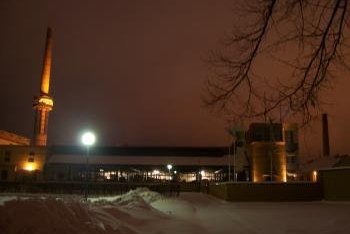
‘Perhaps it is the ones that get away that prove the most interesting’ I thought to myself as my train trundled passed this magnificent 100 year old modernist shoe last factory, I think that was just a feeble attempt to console myself for the error that meant I missed a proper visit to this site.
I had been looking forward to visiting this site in Alfeld (30 minutes south of Hannover) for a little while; alas I contrived to miss it by catching the wrong train a few hours earlier. As such I was only able to admire the impressive glass curtain walls and iconic chimney stack from behind the locked gates leading into the compound. This is one to add to ‘almost visited sites’ as I was not able to get up close and have a closer look. Oh well, gives me a good reason to return I suppose!
The factory was the work of Walter Gropius and Adolf Meyer a few years before they took up prominent roles at the Bauhaus. Its pioneering use of glass walls set out design features that are still very influential; although they are now much refined as their implementation here at the Faguswerks and a decade later at the Bauhaus building was beset by problems of speedy corrosion and poor heat insulation. Even with these problems the building is still regarded as an early masterpiece in international modernism.
Germany has done very well in getting its modernist heritage onto the world heritage …
Keep reading 0 comments
